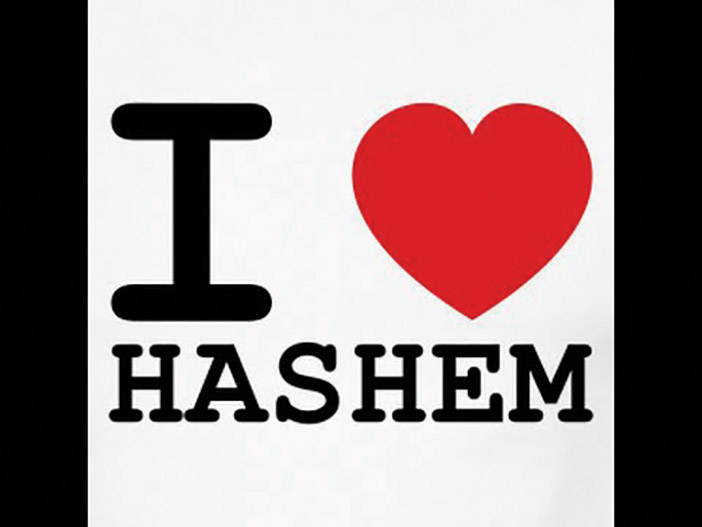
On a quiet summer night I was relaxing on the edge of the water in Tiveria, taking in the air of that uniquely beautiful city. As I gazed across the Kineret, I couldn’t help noticing a boat with bright neon lights and music playing. It was a “party boat” filled with people creating their own hedonistic world, in sharp contrast to the peaceful serene night. This vivid memory contrasts markedly to a different picture I saw of Rav Shmuel Berenbaum, the revered rosh yeshiva of the Mir Brooklyn Yeshiva sitting in the cockpit of a helicopter, traversing the Manhattan skyline. Rav Berenbaum’s eyes were not focused on the sights below, however. Rather, his gaze was focused on the words of the Gemara he held tightly in his hands. I would have had my face pressed against the window, enjoying the beautiful sights, but for Rabbi Berenbaum, the sight of the words of the Gemara was a far greater pleasure.
These two contrasting images portray people absorbed in different journeys that give them pleasure. These contrasts give insight into the life travels of the Jewish people. Two images that come to mind are highlighted in Parshas Beha’aloscha: the traveling of Bnei Yisrael from Har Sinai and the traveling of the aron in the desert.
You may be surprised to hear that the Gemara describes the Bnei Yisrael’s traveling away from Har Sinai as “children running out from school.” As the school year comes to an end, the image of children running, backpacks flying high in the air and children singing “no more teachers, no more books…” is a classic image for the last day of school. The Gemara is accentuating that Bnei Yisrael desired to travel away from Hashem. This is hardly the image we would like to imagine when contemplating our leaving Har Sinai after just receiving the Torah. It’s akin, says Rav Shimon Schwab, to shedding and discarding the lessons they had just learned.
A more positive outlook comes from looking at the traveling of the aron (ark) in the desert. Notice that this section of two verses is bracketed in the Torah by two upside-down and backward letter nuns. The Gemara explains that these backward nuns tell us that the two verses comprise an entire sefer (book)—an entity of its own. We know the Torah as the five books of Moshe, but what type of ‘sefer’ are these two verses, which do not even contain any mitzvos? The Nesivos Shalom explains that this is the type of sefer that tells a Jew how to live his life. The first verse discusses traveling and the second discusses resting. This type of life journey contains the formula for success. The Aron travels with the Torah and the luchos. The aron was the place from which the voice of Hashem emanated when He spoke with Moshe. At the conclusion of the aron’s travel, it is returned to the Tabernacle.
Similarly, in our own life’s journey, if we conduct our lives in a way that reflects Hashem being at our sides, our souls will benefit when they are eventually returned to Hashem. As an example, our life’s journey often includes a yearly pleasure trip. We all agree that traveling in the summertime is enjoyable! Rav Yissocher Frand talks about taking his summer trips to see various wonders of Hashem. I heard him describe the incredible feeling of awe of Hashem as he sat on the edge of the Grand Canyon. This is only one small way of combining pleasure with spirituality.
The Torah describes two possible ways to conduct our own travels. We can travel with Hashem accompanying us or we can travel away from Hashem. It’s our choice. We can be like the people on the “party boat” who create their own hedonistic world, or we can be like Rav Frand, who sees Hashem in the awe-inspiring wonders of the world, both large and small.
As we linger still in the footsteps of Shavuos, let’s remember the feeling we had in making a special connection to Hashem’s Torah during this holiday. Let’s make a commitment to ensure that our travel away from Shavuos is accompanied by the joy of traveling with Hashem, instead of traveling away from Him, God forbid. What better way to travel with Hashem than by making a commitment to learn His holy Torah. Any increase in time, quality or focus in studying Torah can change our whole life’s journey for the better.
By Rabbi Baruch Bodenheim
Rabbi Baruch Bodenheim is the associate rosh yeshiva of Passaic Torah Institute (PTI)/Yeshiva Ner Boruch. PTI has attracted people from all over northern New Jersey, including Teaneck, Bergenfield, Paramus, Rockaway and Fair Lawn. He initiated and continues to lead a multi-level Gemara learning program. Recently he has spread out beyond PTI to begin a weekly beis midrash program with in-depth chavrusa learning in Livingston and Springfield. This year he joined Heichal Hatorah in Teaneck as a Gemara iyun rebbe. His email is [email protected].










